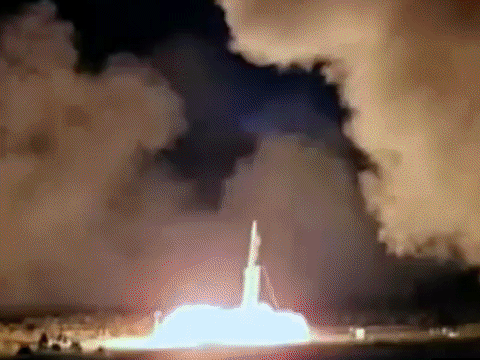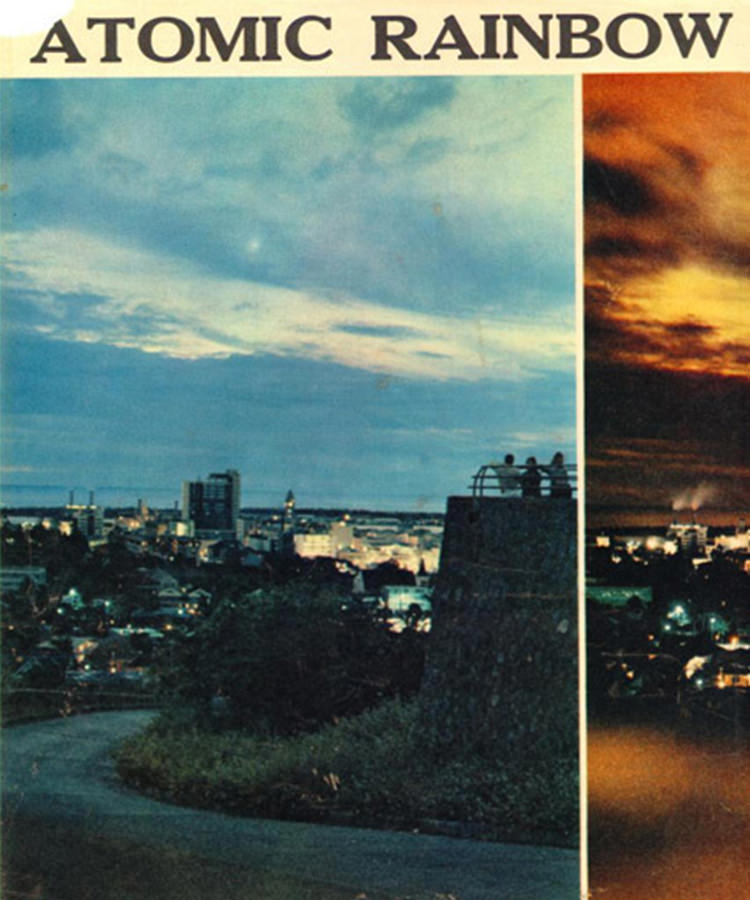There are few excuses to drink like mutually assured destruction. That excuse was firmly seized by Hawaiians in the the heat of the Cold War on a summer night in July of 1962. That fateful night, a hydrogen bomb, code-named “Starfish Prime,” was shot above the Earth’s atmosphere and detonated, causing a nuclear light show of colors. It was tragically beautiful, and also the occasion of some supreme partying.
Throwing a party while the world collapses isn’t a new or rare occurrence. Just look at the speakeasies of the 1920s and 1930s, where flappers danced and bathtub gin flowed while crime proliferated and the Lost Generation wandered. Or the clubs of New York City in the 1980s that continued on through the AIDS epidemic. In this case, the party and the threat of destruction joined together for a spectacular show.
The front page of The Honolulu Advertiser announced the detonation in no uncertain terms. “N-Blast Tonight May Be Dazzling: Good View Likely,” it declared, referencing the imminent nuclear explosion. Beachfront hotels and rooftop bars, some 800 miles away from the launch site, threw “Rainbow Bomb Parties” to celebrate the event, simultaneously beautiful yet possibly also signaling the end of humanity as they knew it. When faced with signs of destruction, sometimes the best thing to do is raise a glass and enjoy the view.

But the story of these nuclear parties begins four years earlier, in 1958. A scientist named James Van Allen had discovered that the Earth is surrounded by belts of high-energy particles held in place by magnetic fields, according to NPR. To this day, those belts are known as Van Allen Belts. The day after the announcement of the belts, Van Allen joined the military in a project to try to disrupt the magnetosphere around Earth with atomic bombs.
The military wasn’t out to create a light show for a new type of nuclear party. They wanted to see if radiation could obscure Russian missiles, damage nearby objects, alter the Van Allen belts, or if the explosion could hit a target on Earth. The Soviet Union asked for a ban on atmospheric tests of nuclear weapons in 1958, which would have scuttled the military’s plan with Van Allen, but in 1961, the ban fell apart.
Enter Project Fishbowl: the end-all-be-all test of the impact nuclear weapons can have when detonated in space. Within a year of the ban becoming a moot cause, the U.S. was ready to launch Starfish Prime into the atmosphere and give the show of a lifetime for Honolulu partiers.
Seconds after 11 p.m. Hawaiian local time, the equivalent of 1.4 million tons of TNT exploded in space. The H-bomb shot heat, light, radiation, and subatomic particles into the Van Allen Belts above the Earth’s atmosphere. Those particles collided with oxygen and nitrogen atoms, transferring energy that was then released as light. Oxygen higher up in space set off a red light, green a little farther down, and then blue light even farther down where there are more nitrogen atoms.
For a sense of what it looked like to the naked eye, think of the light show as a tropical version of the aurora borealis around the North and South Poles. The natural colors come from solar wind hitting the Earth and causing the same effect. It’s also very, very cold to watch the aurora borealis in person. The colors from Starfish Prime were more violent than the solar wind, though. The sky filled with all three colors all at once, creating a rainbow and giving rise to the name, “Rainbow Bomb Party.” It also was tropically pleasant to watch in person.
The show lasted for seven minutes. The electromagnetic pulse from the blast blew out streetlights and knocked telephones offline. Garages acted erratically, opening and closing on their own. Radios went dark. But for those seven minutes, the focus was on the sky. People could forget the nuclear bomb drills in school, the artists and politicians being rounded up under McCarthyism, and the new war in Vietnam. Because sometimes, the best thing to do in the face of destruction is throw a party.
